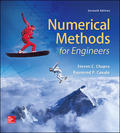
Concept explainers
Want to see the full answer?
Check out a sample textbook solution
Chapter 21 Solutions
EBK NUMERICAL METHODS FOR ENGINEERS
Additional Engineering Textbook Solutions
Fundamentals of Differential Equations (9th Edition)
Advanced Engineering Mathematics
Basic Technical Mathematics
Geometry, Student Edition
Thinking Mathematically (6th Edition)
- A root of the function f(x) = x3 – 10x² +5 lies close to x = 0.7. Doing three iterations, compute this root using the Newton- Raphson method with an initial guess of x=1). Newton-Raphson iterative equation is given as: f(x;) Xi+1 = Xị - f'(xi)arrow_forwardQ1 / Reduce the block diagram to the simple form R(s) S 13 S 0. S 1 S C(s)arrow_forwardA webassign.net/web/Student/Assignment-Responses/last?dep=28040811 Consider the following. Z = 2 Sketch a graph of the plane. 10 10 0. 5. 5. 10 10 10 10 10 10 rz 0. 5. 10 10 10 10 O Type here to searcharrow_forward
- 88|| 5:08 docs.google.com/for 3 Your answer Draw the orthogonal projections of the Isometric shown in the figure below. 52 20 26 TRUE R16 12 180 1 Add file Submit Never submit passwords through Google Forms. This form was created inside of University of Baghdad. Report Abuse 001 Il>arrow_forwardConsider the function p(x) = x² - 4x³+3x²+x-1. If bisection is used with the function with a starting interval [2 3], which of the following is the absolute value of relative error at the end of the second iteration? 0.0213 0.091 0.0435 0.2000arrow_forward3. Using the trial function uh(x) = a sin(x) and weighting function wh(x) = b sin(x) find an approximate solution to the following boundary value problems by determining the value of coefficient a. For each one, also find the exact solution using Matlab and plot the exact and approximate solutions. (One point each for: (i) finding a, (ii) finding the exact solution, and (iii) plotting the solution) a. (U₁xx - 2 = 0 u(0) = 0 u(1) = 0 b. Modify the trial function and find an approximation for the following boundary value problem. (Hint: you will need to add an extra term to the function to make it satisfy the boundary conditions.) (U₁xx - 2 = 0 u(0) = 1 u(1) = 0arrow_forward
- mathforadmi..2dff1dd723 PTU Kadoorie sygini 1930 Technical Department of Applied Mathematics Second Semester 2020/2021 Math for Administration Assignment 2 Question 1 For the function: y = 0.01x- 0.001x² Find the zeros, the vertex and the optimum value (max. or min.) Question 2 Suppose a company has fixed costs of $300 and variable 3 costs of x + 1460 dollars per unit, 4 where x is the total number of units produced. Suppose further that the selling price of its product is 1500 X- ♡ lar Fine break-even points. init. II جامعة Palestine ||arrow_forwardx^2-5x^(1/3)+1=0 Has a root between 2 and 2.5 use bisection method to three iterations by hand.arrow_forwardThe vertical asymptote of the . following function is 4x2 + 20x + 24 f(x) = x + 3arrow_forward
- Example: Sketch the graphs of the following functions. 1. y=sin2x So w nY oy shrin ILYarrow_forwardUse bisection to determine the drag coefficient needed so that an 80-kg parachutist has a velocity of 36 m/s after 4 s of free fall. Note: The acceleration of gravity is 9.81 m/s2 . Start with initial guesses of xl = 0.1 and xu = 0.2 and iterate until the approximate relative error falls below 2%.arrow_forward2 0 2 5 7 11 f(x) 13 5 17 28 41 Selected values of a differentiable function f are given in the table above. What is the fewearrow_forward
 Principles of Heat Transfer (Activate Learning wi...Mechanical EngineeringISBN:9781305387102Author:Kreith, Frank; Manglik, Raj M.Publisher:Cengage Learning
Principles of Heat Transfer (Activate Learning wi...Mechanical EngineeringISBN:9781305387102Author:Kreith, Frank; Manglik, Raj M.Publisher:Cengage Learning
